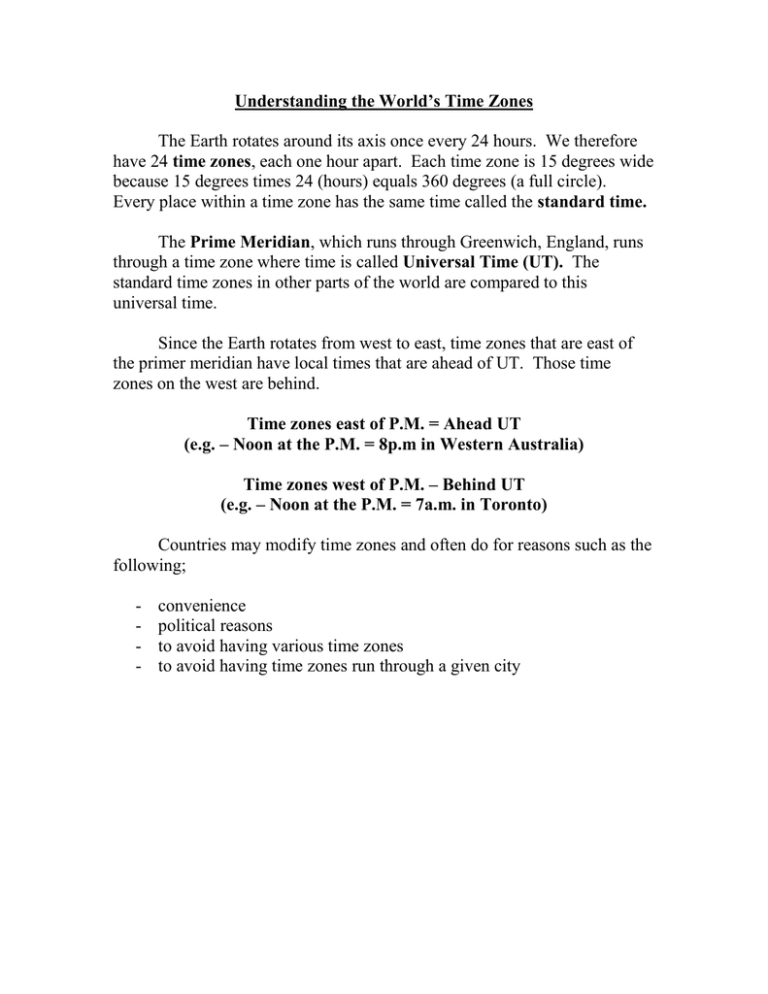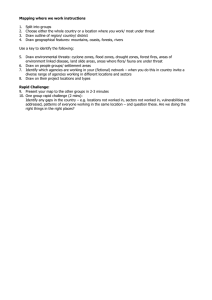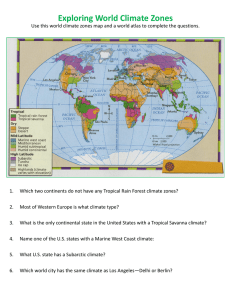Understanding the World’s Time Zones time zones
advertisement

Understanding the World’s Time Zones The Earth rotates around its axis once every 24 hours. We therefore have 24 time zones, each one hour apart. Each time zone is 15 degrees wide because 15 degrees times 24 (hours) equals 360 degrees (a full circle). Every place within a time zone has the same time called the standard time. The Prime Meridian, which runs through Greenwich, England, runs through a time zone where time is called Universal Time (UT). The standard time zones in other parts of the world are compared to this universal time. Since the Earth rotates from west to east, time zones that are east of the primer meridian have local times that are ahead of UT. Those time zones on the west are behind. Time zones east of P.M. = Ahead UT (e.g. – Noon at the P.M. = 8p.m in Western Australia) Time zones west of P.M. – Behind UT (e.g. – Noon at the P.M. = 7a.m. in Toronto) Countries may modify time zones and often do for reasons such as the following; - convenience political reasons to avoid having various time zones to avoid having time zones run through a given city


